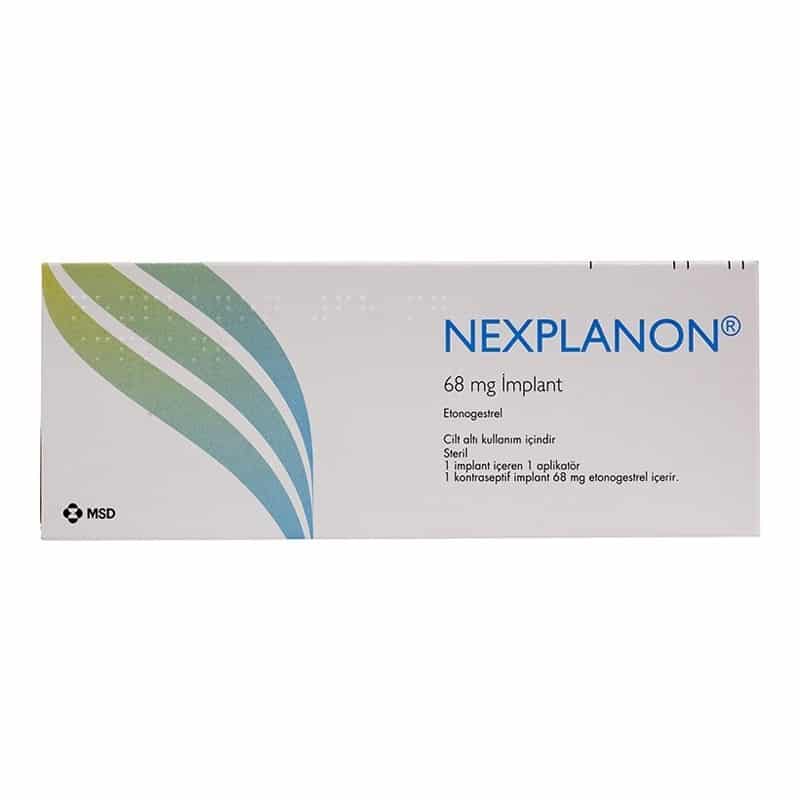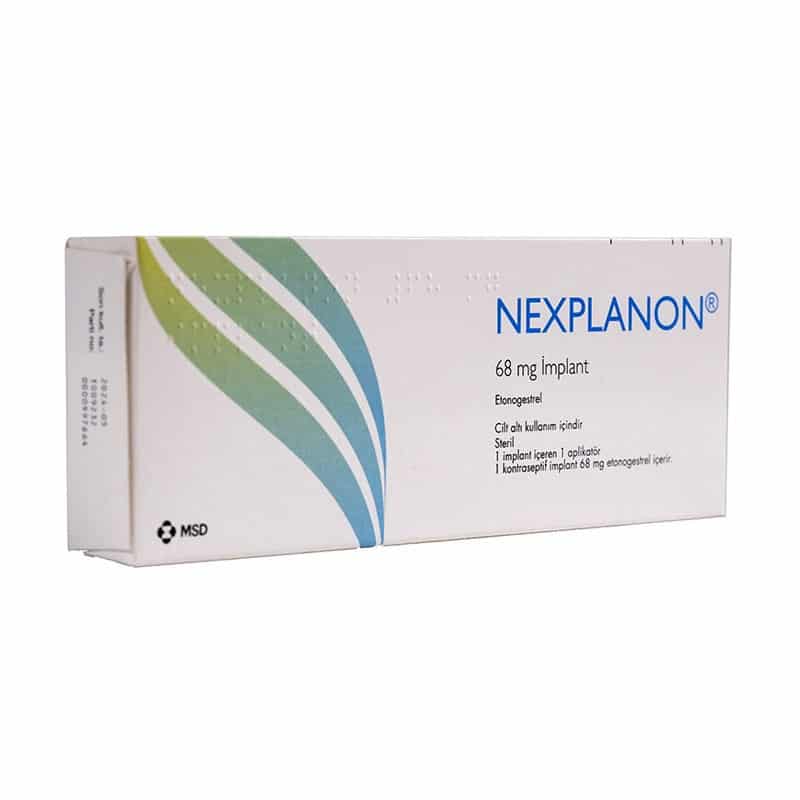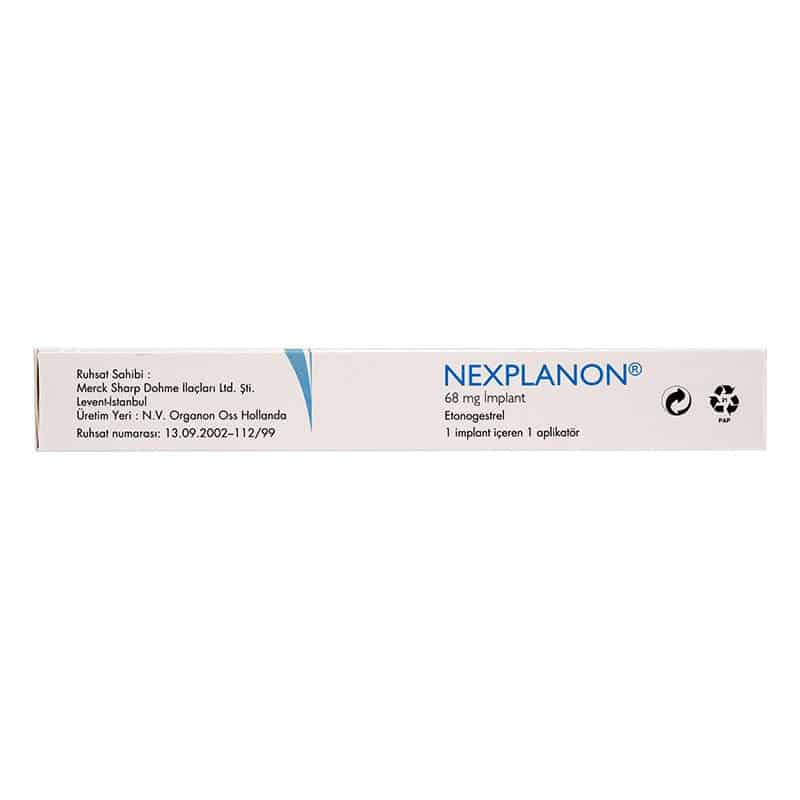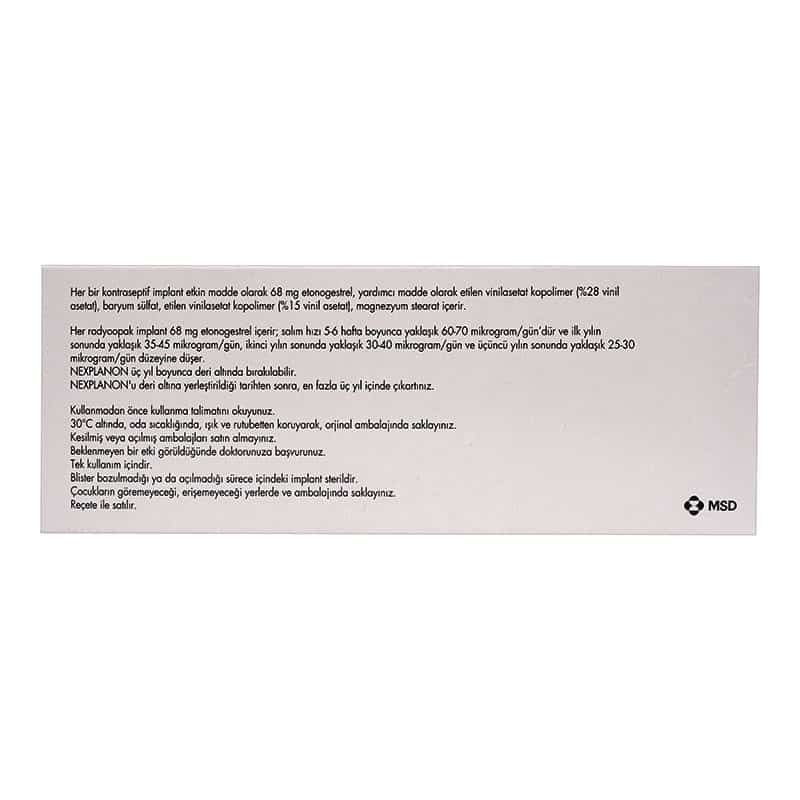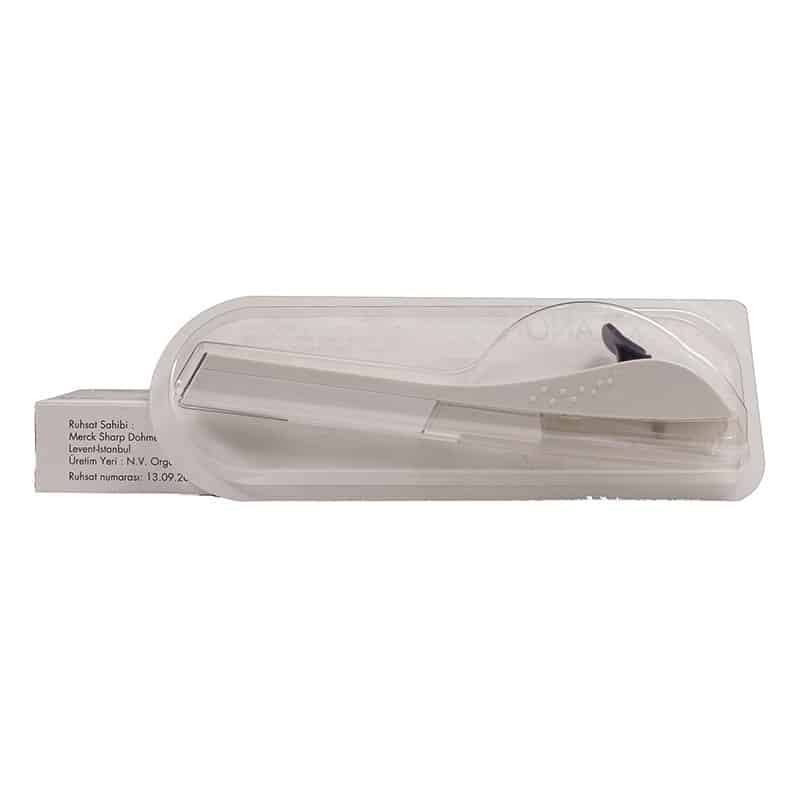NEXPLANON® is a 68 mg etonogestrel subdermal contraceptive implant, designed for long-term birth control. It is a progestin-only contraceptive, meaning it does not contain estrogen, and is implanted under the skin of the inner upper arm. NEXPLANON® is effective for preventing pregnancy for up to 3 years and is inserted via a minor procedure conducted by a healthcare professional.
How NEXPLANON® Works
NEXPLANON® works primarily by releasing etonogestrel, a synthetic progestin hormone, into the bloodstream. The hormone prevents pregnancy by:
- Inhibiting ovulation: Etonogestrel prevents the release of eggs from the ovaries.
- Thickening cervical mucus: This makes it harder for sperm to enter the uterus and fertilize an egg.
- Thinning the endometrial lining: This reduces the likelihood of implantation should fertilization occur.
Effectiveness of NEXPLANON®
NEXPLANON® is considered one of the most effective forms of reversible contraception available, with a failure rate of less than 1%.
In clinical studies, the Pearl Index for NEXPLANON® was reported to be 0.38 pregnancies per 100 women-years.
This means that in a study of 923 women over 20,648 menstrual cycles, only 6 pregnancies were reported. As a result, NEXPLANON® is more than 99% effective in preventing pregnancy.
Dosage and Administration of NEXPLANON®
The NEXPLANON® implant is pre-loaded into a sterile applicator and contains 68 mg of etonogestrel. The implant is 4 cm long and 2 mm wide, and it is inserted just beneath the skin of the inner, non-dominant upper arm.
- Initial Release Rate: The implant releases 60-70 mcg/day during the first 5-6 weeks.
- Reduced Release Over Time: By the end of the first year, the release rate decreases to 35-45 mcg/day, and by the end of year three, it releases 25-30 mcg/day.
After 3 years, NEXPLANON® must be removed and replaced if continued contraception is desired. Removal should only be performed by a healthcare provider trained in the technique, and insertion or removal typically takes less than a minute in most cases.
NEXPLANON® Side Effects and Risks
While NEXPLANON® is highly effective, it comes with potential side effects. The most common side effects involve changes in bleeding patterns:
- Irregular bleeding: Approximately 11% of women discontinued NEXPLANON® use due to irregular or unexpected bleeding.
- Amenorrhea: Some women may experience no periods during their use of NEXPLANON®.
- Spotting: Light or irregular spotting may occur between periods.
Other common side effects include:
- Weight gain: Up to 2.8 lbs within the first year.
- Headaches: Occurring in a notable percentage of users.
- Vaginitis: Vaginal infections and inflammation can occur.
- Acne: Increased acne has been reported in some users.
Serious side effects, though rare, can include blood clots, ectopic pregnancy, and allergic reactions. Additionally, the insertion or removal procedure carries a slight risk of implant migration or nerve damage.
Contraindications for NEXPLANON®
NEXPLANON® is not suitable for every woman. It is contraindicated in individuals who:
- Are currently pregnant or suspect pregnancy.
- Have a history of thrombosis or blood clots.
- Have or have had breast cancer or any hormone-sensitive cancer.
- Have unexplained vaginal bleeding.
- Have liver disease or liver tumors.
Women with these conditions should discuss alternative birth control options with their healthcare provider.
Drug Interactions
NEXPLANON®’s effectiveness can be diminished when taken with certain other medications. Drugs that induce liver enzymes, such as those that interact with CYP3A4, can reduce etonogestrel levels in the blood, leading to reduced contraceptive efficacy. These include:
- Anti-epileptics (e.g., carbamazepine, phenytoin)
- HIV medications (e.g., ritonavir)
- Antifungal agents (e.g., griseofulvin)
- St. John’s Wort: An herbal supplement known to affect liver enzyme activity.
Women taking these medications should consider using an additional, non-hormonal contraceptive method (e.g., condoms) while using NEXPLANON®.
Insertion and Removal Process
NEXPLANON® must be inserted and removed by a healthcare provider trained in the insertion and removal techniques. The implant is inserted under the skin using a sterile, pre-loaded applicator. It is a quick outpatient procedure that generally takes less than a minute and requires only local anesthesia.
- Insertion Timing: To ensure immediate protection against pregnancy, the implant should be inserted within the first 5 days of the menstrual cycle. If inserted at any other time, backup contraception (such as condoms) should be used for 7 days.
- Removal: After 3 years, or earlier if requested, the implant is removed through a small incision under local anesthesia. A new implant can be inserted during the same procedure if continued contraception is desired.
Post-Insertion Care
After insertion, it is important to:
- Check for the implant’s presence by gently feeling for it under the skin. In 99.7% of cases, the implant is palpable after insertion.
- Monitor for any unusual symptoms, such as pain, swelling, or infection at the insertion site.
- Use a non-hormonal backup contraceptive method for 7 days if insertion was not during the first 5 days of the menstrual cycle.
Regular follow-up with a healthcare provider is recommended to ensure the implant remains in place and is functioning correctly.

